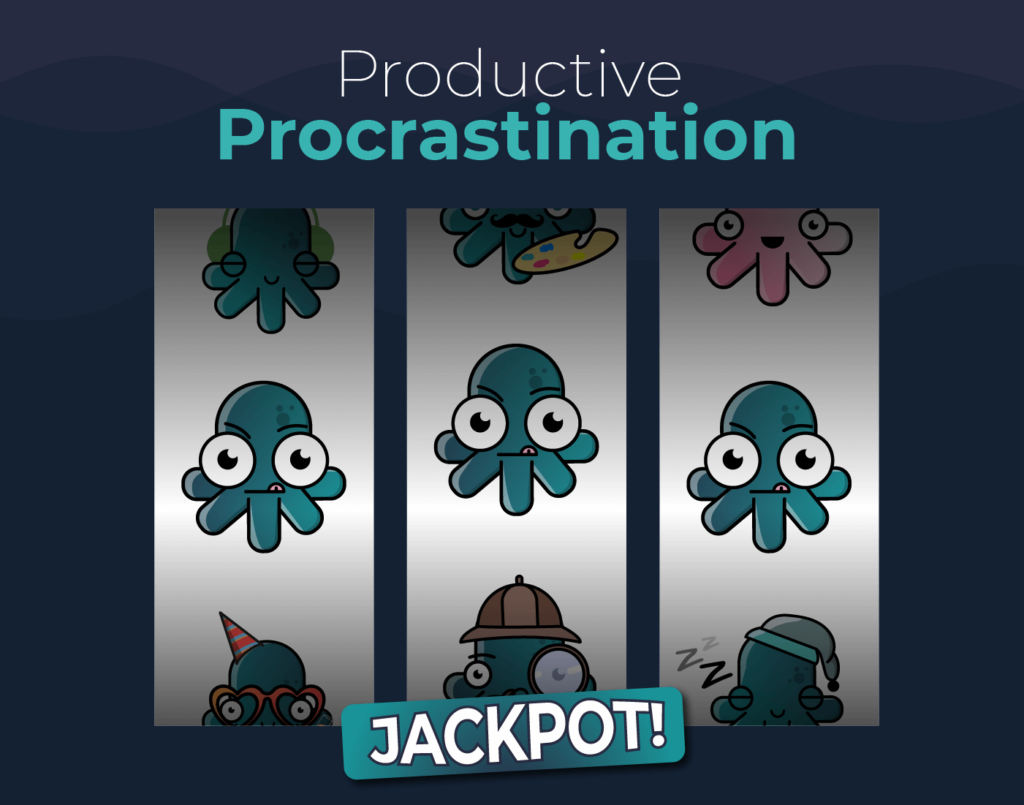Procrastination often gets a bad rap, but what if we told you it’s possible to procrastinate and be productive simultaneously? That’s the concept behind “productive procrastination,” which describes putting off tasks in favor of other activities that are still productive but not necessarily what you should be doing now.
In this post, we’ll explore the concept of productive procrastination in more detail, including examples of activities that can be considered productive procrastination, tips for making it work for you, and potential pitfalls to watch out for. Whether you’re a chronic procrastinator or looking for new ways to increase your productivity, you will like to take advantage of this!
Contents
Definition of productive procrastination: is it good?
Productive procrastination technique is delaying or putting off important tasks in favor of other activities that are still productive but not necessarily what you should be doing now.
Is it good?
Yes, it can be good for several reasons:
- Taking a break from our primary tasks and focusing on other productive activities can give your brain a chance to rest and recharge. This can help you avoid burnout, leading to better focus and more efficient work.
- Some tasks require creative thinking or problem-solving, and stepping away from them can subconsciously allow your mind to work on solutions.
- Productive procrastination can help us develop new skills or work towards other goals that we may have been putting off, leading to a sense of accomplishment and motivation to tackle our main tasks with renewed energy.
Structured procrastination vs. productive procrastination
Structured procrastination can be a harmful habit that leads to unproductive behavior and can be detrimental to achieving important goals. The critical difference between structured procrastination and productive procrastination is that productive procrastination involves delaying essential tasks in favor of other productive activities. In contrast, structured procrastination consists of waiting for necessary tasks in favor of less important ones.
Productive procrastination involves deliberately choosing productive activities that are not the most important or pressing. Individuals can still feel productive and accomplished by engaging in these activities while delaying essential tasks that may require more mental effort or time.
Pros and Cons of Productive Procrastination
Productive procrastination can boost creativity, increase productivity, and develop new skills. However, like anything in life, this approach has pros and cons.
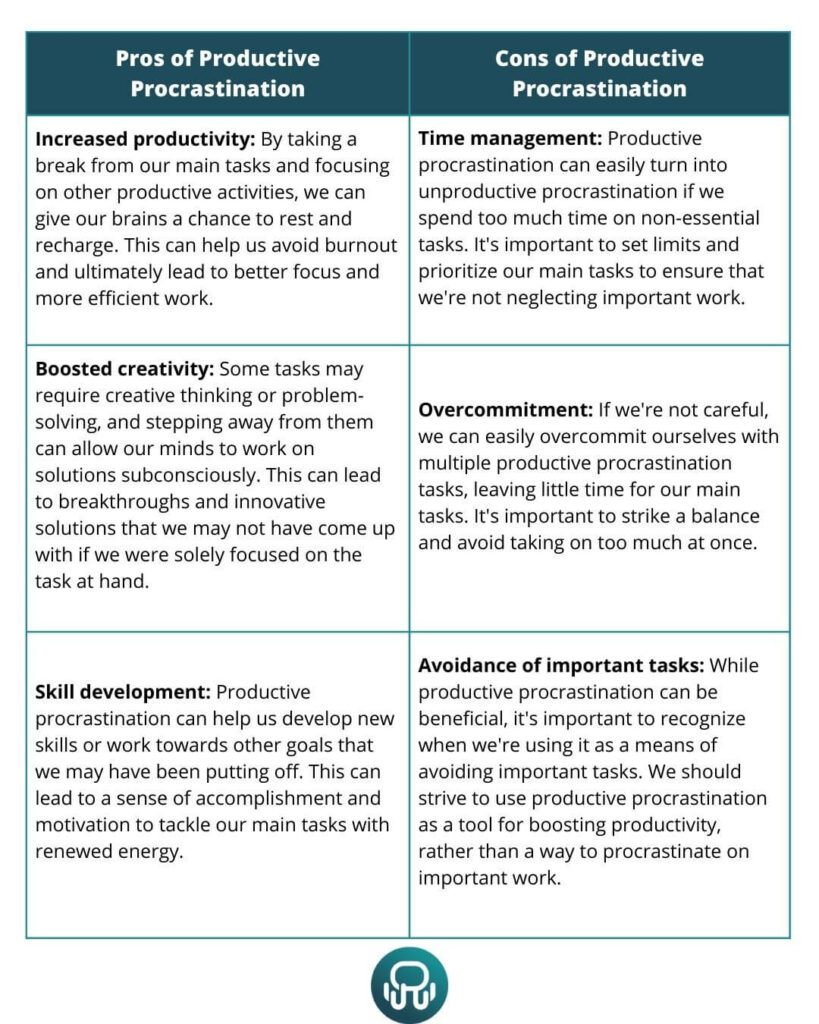
How to manage productive procrastination to be effective
Productive procrastination can be a powerful tool for boosting productivity and achieving goals. However, it’s critical to manage it effectively to avoid over-commitment and ensure you’re paying attention to meaningful work. Here are some tips:
- Set specific goals: It’s essential to set clear goals for your main tasks and productive procrastination activities. This will help you stay focused and avoid over-commitment.
- Prioritize: Prioritize your main tasks and ensure you’re paying attention to important work in favor of less pressing tasks. Use productive procrastination as a tool to boost your productivity, not as a means of avoiding important work.
- Track your time: Use time tracking tools or methods to track your time on your main tasks and productive procrastination activities. This will help you identify areas where you may spend too much time on non-essential tasks.
- Mix it up: Experiment with different productive procrastination activities to keep things exciting and avoid burnout. Try a new skill, organize your workspace, or learn something new.
- Take breaks: Allow yourself to rest and recharge at regular intervals throughout the day. This will help you avoid burnout and maintain your focus throughout the day.
- Know your limits: Be mindful and avoid taking on too much at once. It’s essential to balance your main tasks and your productive procrastination activities to ensure you’re not neglecting important work.
By following these tips, you can effectively manage your productive procrastination activities to boost your productivity and achieve your goals.
Practical examples of productive procrastination at work
Now we’ll explore some practical examples of productive procrastination activities that you can implement in your workplace to increase productivity, reduce stress, and boost creativity.
2 Minute Productive Procrastination Tasks Examples
We will explore practical examples of productive procrastination activities that can be completed in as little as 2 minutes at work:
- Clean your workspace– Take a few minutes to tidy up your desk, organize your files, and discard any clutter. A clean workspace can help you stay focused and increase your productivity.
- Prioritize your to-do list– Spend a couple of minutes reviewing your to-do list and prioritizing your tasks. This can help you stay focused and ensure you’re first working on the most critical tasks.
- Take a brief walk– Take a short walk around your office or outside for a few minutes. This can help clear your mind, reduce stress, and increase your energy levels.
- Respond to non-urgent emails– Take a couple of minutes to respond to any non-urgent emails that have been sitting in your inbox. This can help clear your inbox and reduce stress.
These are just a few productive procrastination tasks that can be completed in just 2 minutes. By engaging in these activities, you can make the most of your procrastination time and increase your overall productivity at work.
10 Minute Productive Procrastination Tasks Examples
Instead of wasting time on unproductive activities, you can use your procrastination time more effectively by engaging in 10-minute productive procrastination tasks. These tasks are quick and easy to complete:
- Brainstorming– Take a few minutes to brainstorm ideas for an upcoming project or task. It can help stimulate your creativity and generate new ideas.
- Meditate– Spend 10 minutes meditating to help clear your mind and reduce stress. It will help you feel more focused and productive when you return to work.
- Schedule your day– Take a few minutes to schedule your day, including time for essential tasks, breaks, and meetings. It can help you stay organized and on track throughout the day.
- Read industry news– Use 10 minutes to read industry news or articles related to your field. It can help you stay up-to-date on trends and developments in your industry.
- Email clean-up– Spend 10 minutes organizing your inbox and responding to non-urgent emails. This can help you stay on top of your email and reduce stress.
30 Minute Productive Procrastination Tasks Examples
These tasks are longer and more involved than the 10-minute tasks, but they can still be completed relatively quickly and can have a significant impact on your productivity:
- Create a social media plan– Use 30 minutes to create a social media plan for your business or personal brand. You will stay organized and consistent with your social media presence.
- Research industry trends– Spend 30 minutes researching industry trends and new developments. It can help you stay informed and ahead of the curve.
- Analyze your productivity habits– Analyse your productivity habits and identify areas for improvement. This way, you can streamline your workflow and maximize your productivity.
- Create a to-do list– Create a to-do list for the week or month ahead. It can help you stay organized and focused on your priorities.
- Conduct a competitor analysis– Spend 30 minutes conducting a competitor analysis to gain insights into your industry and competitors. You will stay ahead of the competition and identify new growth opportunities.
How to break free from procrastination?
If procrastination limits your productivity, there is always a way to improve how you handle your work and get things done. One way to break free from procrastination using Rambox, the workspace simplifier that consolidates all your apps into one interface. With Rambox, you can take control of your work environment and stay productive even while procrastinating on specific tasks.
Better collaboration with Rambox
With more than 700 compatible applications, you can centralize all your essential tools. In this catalog, you’ll also find multiple apps designed to help you avoid distractions, making it easier to stop procrastinating. This streamlines your workflow and facilitates the organization and effective communication with your team. Instead of jumping between different applications and tools, you can access everything from one central location. It saves time and reduces the risk of missing important messages or deadlines.
Group your tools by urgency and customize your workspace
Rambox’s customizable workspaces enable users to group applications by category and arrange them to align with their specific needs. To turn your procrastination into productive procrastination, you can use Rambox to help you prioritize and manage your tasks more effectively. For example, you can group your applications by urgency or deadline in different workspaces, allowing you to focus on the most critical tasks first.
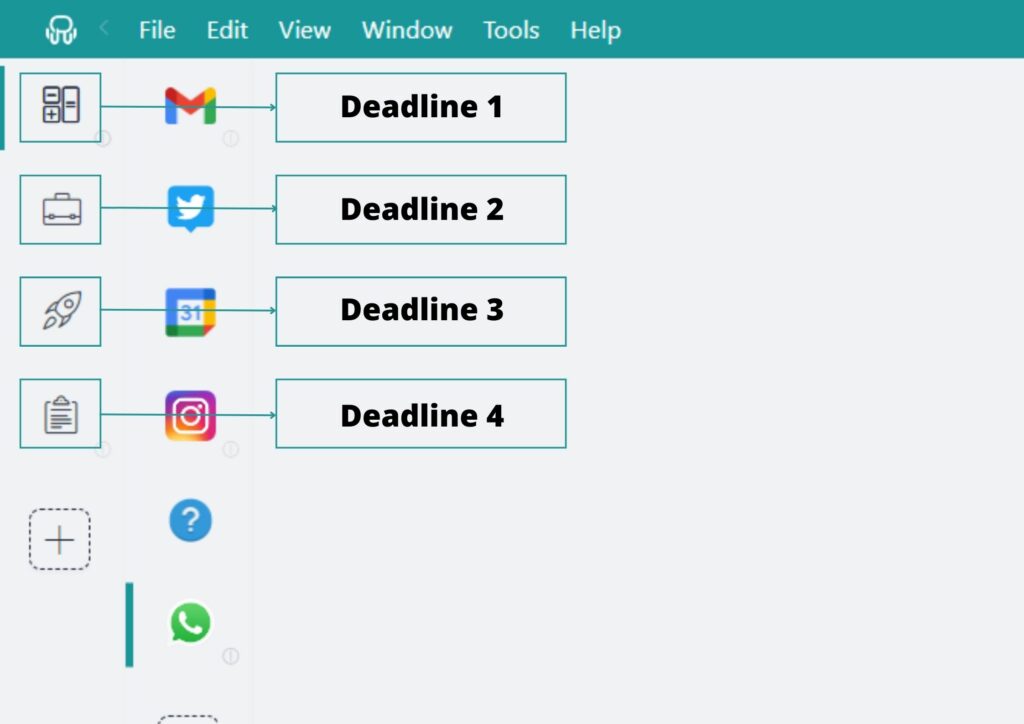
Furthermore, Rambox offers customizable layouts, allowing users to display applications most appropriate for their tasks. With a variety of predefined designs to choose from, users can select horizontal or vertical modes depending on their preferences. Doing so allows you to access the required information quickly, ultimately promoting better organization on your desktops.
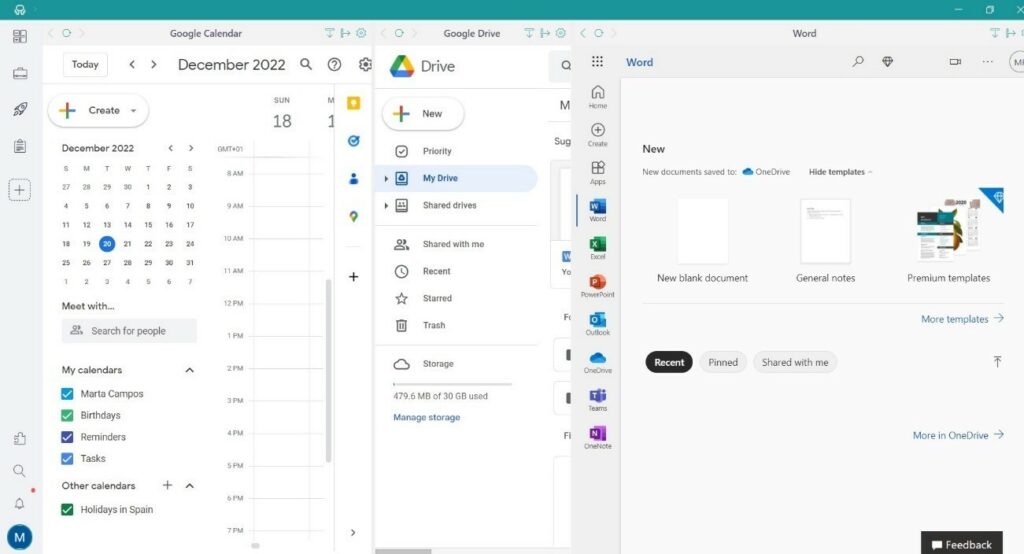
Customize your notifications
Rambox offers a range of notification customization options to help you take control of your work environment. You can receive desktop notifications and sound alerts or disable notifications entirely for specific applications or workspaces.
Muting notifications will ensure you get all vital information as Rambox stores all notifications. You can review missed messages at your convenience. Rambox also visually highlights unread messages or emails from each app, providing a quick overview of where your focus should be. These features help you stay informed without getting distracted by unnecessary interruptions.
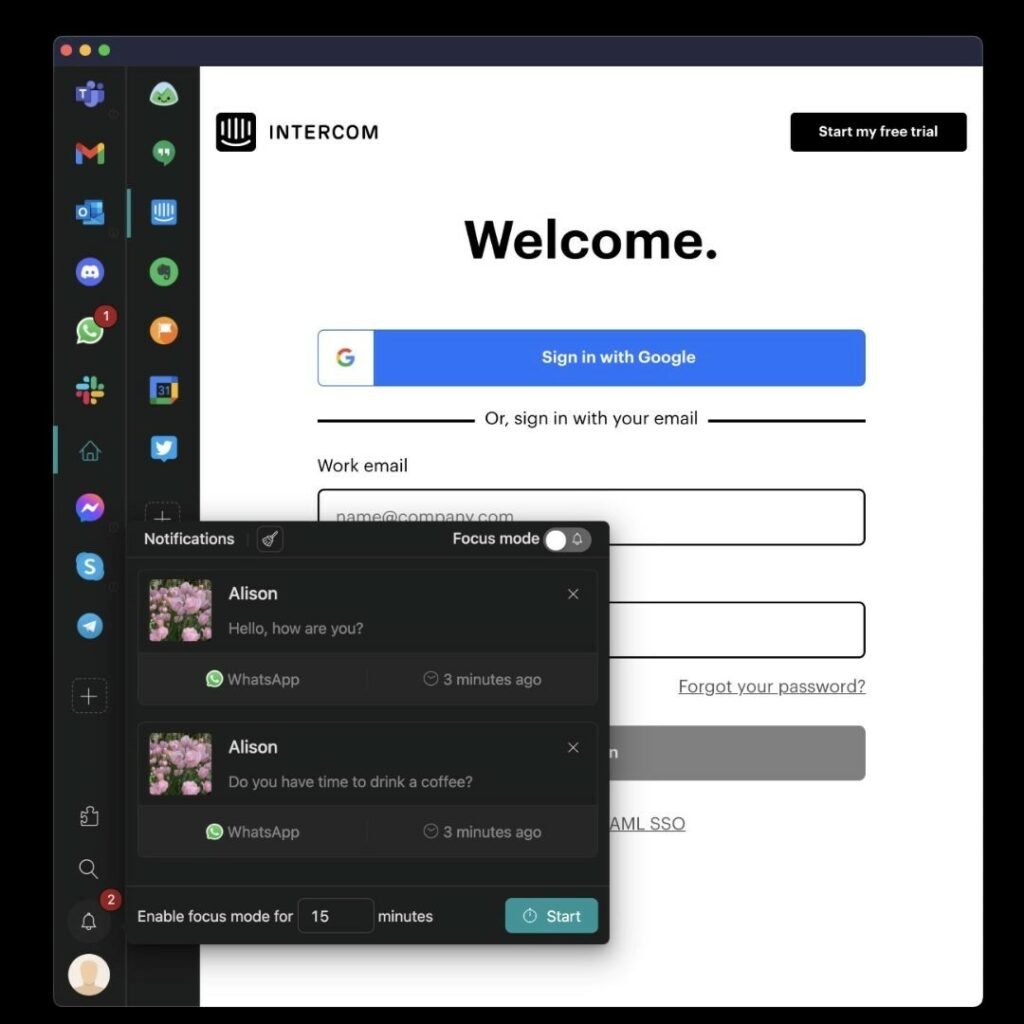
Quick access to important files and documents
Rambox’s quick search feature can make procrastination more productive. With this function, you can swiftly switch between various applications and efficiently respond to messages, emails, or documents. Whether you need to find a specific message or reply to an urgent email, the quick search feature helps you easily navigate your apps. By saving you time and simplifying your workflow, Rambox makes it easier to stay focused and productive, even during procrastination.
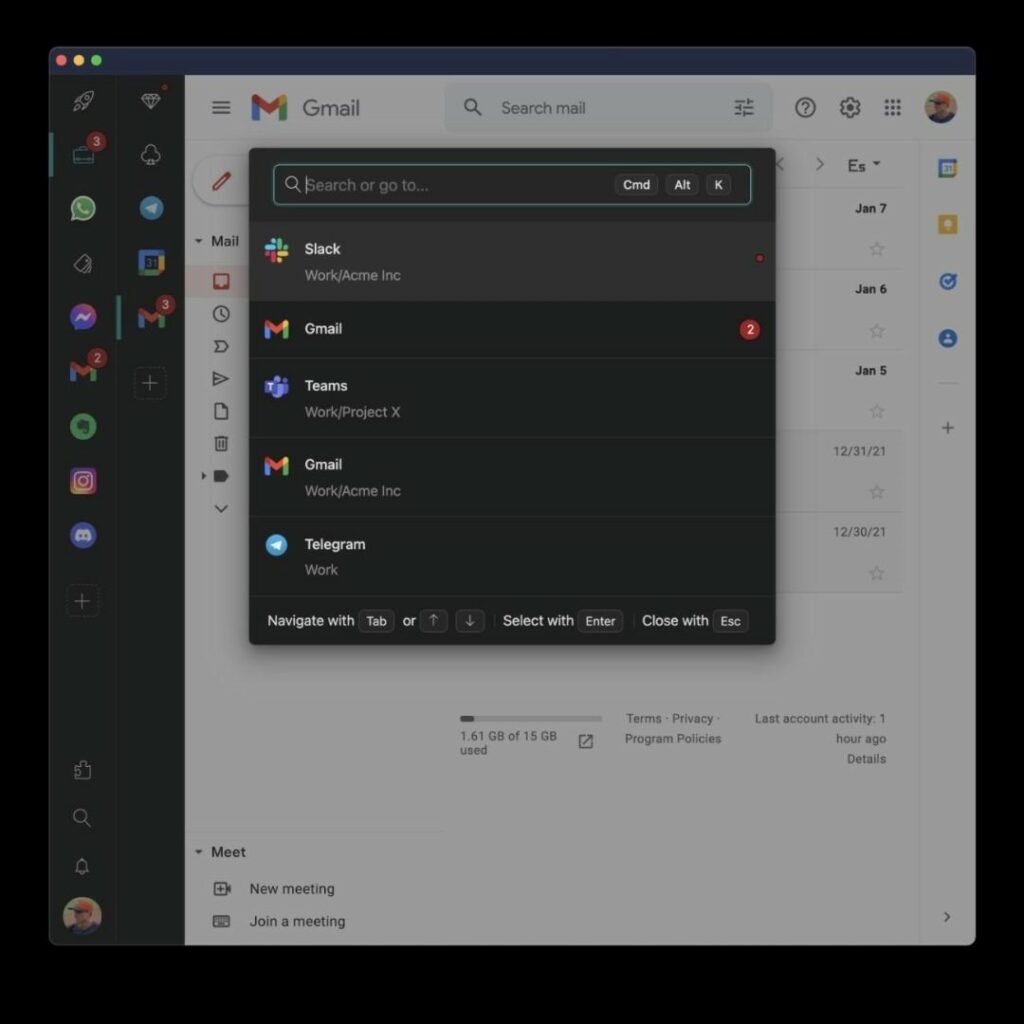
Now that you know how Rambox functionalities and features can help you improve productive procrastination, download Rambox, configure it to your liking, and enjoy all its advantages as soon as possible.
If you have questions about Rambox features, don’t hesitate to contact us!
FAQ
Is productive procrastination bad?
Productive procrastination isn’t inherently bad; it can be beneficial if managed correctly. It allows you to accomplish tasks that are still productive, giving your brain a break from more demanding work. This can help you avoid burnout and increase overall productivity. However, it’s crucial to ensure that you eventually address the primary tasks you are procrastinating on, as neglecting these can lead to negative consequences.
How do you practice productive procrastination?
To practice productive procrastination, start by identifying less critical but still productive tasks that you can do instead of your main tasks. Examples include organizing your workspace, responding to non-urgent emails, or brainstorming ideas. Set specific goals and time limits for these activities to avoid over-commitment. Prioritize your primary tasks and use productive procrastination as a way to recharge and gain new perspectives, not as a means of avoiding important work altogether.
What is the root cause of procrastination?
The root cause of procrastination can vary but often includes factors such as fear of failure, perfectionism, lack of motivation, or feeling overwhelmed by the task at hand. Psychological factors like anxiety or low self-esteem can also contribute. Understanding these underlying reasons can help you develop strategies to manage procrastination more effectively and improve your productivity.
